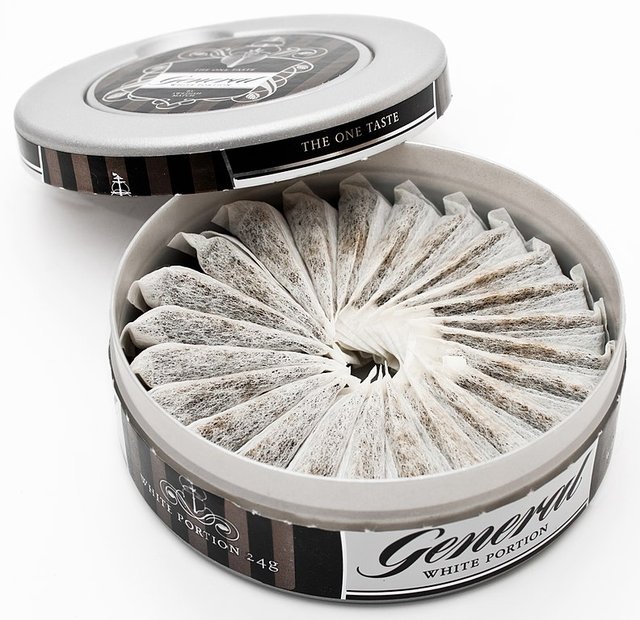Snus is an oral tobacco product that has been used for more than 200 years. Named after the Swedish word for snuff, snus is made from ground tobacco leaves that are mixed with salt and water. It may also contain food-grade tobacco smoke aroma, or other flavourings, and is placed under the upper lip either in small teabag-like sachets called portion snus or loose. Snus is most widely used in Scandinavia, particularly in Sweden and Norway, where a form of the product known as ‘Swedish snus’ dominates the market.

Image of portion snus. Author: Alekos. Source: Wikimedia Commons
Snus is sometimes confused with a different product, nicotine pouches, as both are placed under the lip. But, unlike snus, nicotine pouches do not contain tobacco. Instead, they are made from plant fibres impregnated with nicotine.
The health impacts of smoking are now well understood to be caused by the combustion process that produces a cocktail of harmful chemicals found in smoke. Snus use differs from cigarette use because it does not involve the burning of tobacco and therefore avoids many of the risks associated with smoking.
Swedish snus is also distinct from other types of oral tobacco products because of the way it is produced. Unlike some other smokeless tobaccos, the tobacco in Swedish snus is not fermented but is pasteurised instead. This heat-treatment process inhibits the growth of bacteria that help the formation of a range of toxicants found in tobacco products.
Despite being used for centuries, the relative safety of snus compared to cigarettes has only very recently been confirmed by independent epidemiological and clinical investigation. But research has now shown there is little difference in health-adjusted life expectancy between smokers who quit all tobacco and smokers who switch to snus.
Snus contains lower levels of a range of toxicants found in cigarette smoke. For example, the pasteurisation process reduces the quantity of tobacco-specific nitrosamines present in snus. These chemicals are one of the primary carcinogens found in tobacco, and they have been linked with cancers of the lungs, oral cavity, oesophagus and liver from both cigarette and smokeless tobacco usage.
In Sweden and Norway, high levels of snus use are associated with very low levels of smoking and smoking-related disease. Swedish men have switched from smoking to using snus in large numbers, with 23% of men using it daily in 2018. Sweden has by far the lowest rate of smoking in Europe and is the only EU state to have reached ‘smoke-free status’, classically defined as less than 5% adult smoking prevalence, in the adult population aged between 15 and 54. By comparison, the average EU smoking rate for this population is 26 per cent. Swedish men also have Europe’s lowest level of tobacco-related mortality, with 152 deaths attributable to smoking per 100,000 compared with the European average of 373 deaths per 100,000.
In October 2019, the US Federal Drug Administration (FDA) granted snus manufacturer Swedish Match the agency’s first ever modified risk tobacco product (MRTP) orders. The decision authorized the marketing of eight of its General Snus products alongside specific information about the lower risks of certain health effects compared to smoking cigarettes. The FDA’s summary stated: “The available scientific evidence demonstrates that exclusive use of the eight General Snus products will significantly reduce harm and the risk of tobacco‐related disease to individual tobacco users”, adding “the eight General Snus MRTPs will benefit the health of the population as a whole”. The FDA also said: “The claim ‘Using General Snus instead of cigarettes puts you at a lower risk of mouth cancer, heart disease, lung cancer, stroke, emphysema, and chronic bronchitis’ is scientifically accurate.”
Find out more about snus in our Briefing Paper here.